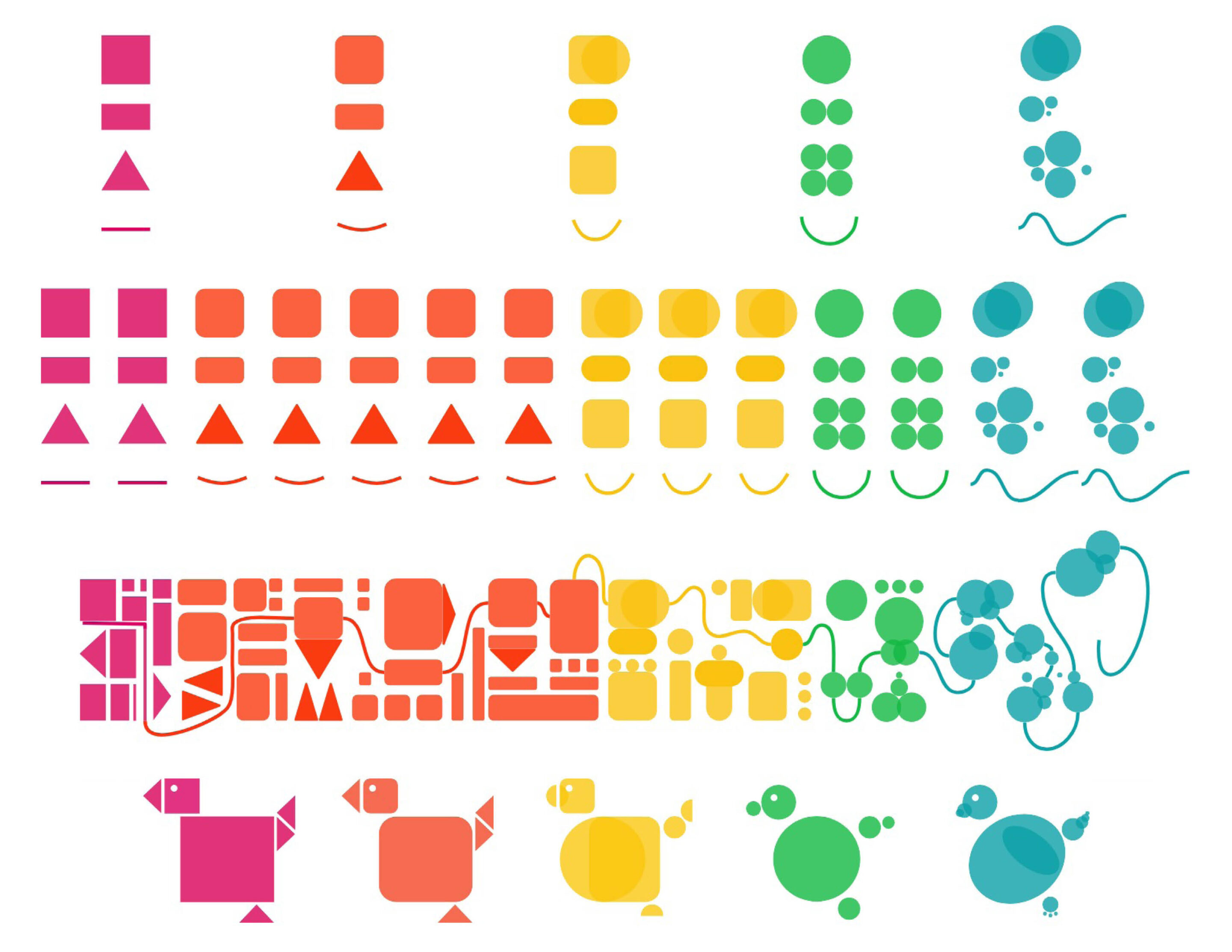Creating Order from Chaos: How Artists Transform Healing Spaces
by Andrea Hardy, AIA, and Scott Ross Steffes, IIDA

Wildlife artist Charley Harper once observed, “When I look at a wildlife or nature object, I don’t see the feathers in the wings, I just count the wings. I see exciting shapes, color combinations, patterns, textures, fascinating behavior and endless possibilities for making interesting pictures.” This philosophy of distilling complex forms to their essential visual elements—creating “an ordered universe” within the chaos of the world—offers profound insight into how artists can help transform healing environments.
This approach to artistic vision becomes particularly powerful when applied to spaces designed for our most vulnerable patients: hospitalized children. The recently completed Diamond Children’s Play Zone exemplifies how this philosophy of ordered artistic ecosystems can create therapeutic environments that nurture healing, play, and learning.
The Evolution of Healing Through Design
Spanning 7,000-sf, the Diamond Children’s Play Zone represents a revolutionary approach to pediatric healthcare environments. Rather than sterile medical spaces that can feel intimidating to young patients, this therapeutic recreational facility employs what Harper would recognize as a carefully orchestrated visual ecosystem —one where every element serves both aesthetic and healing purposes.
The design concept draws inspiration from this methodology of seeing beyond surface details to fundamental forms. Just as an artist might focus on wings rather than feathers, the Play Zone’s team identified core elements that would resonate with children: shapes that evolve from simple to complex, colors that transition organically across the spectrum, and patterns that create visual rhythm while maintaining a therapeutic sense of calm.


Shapes: The graphics evolve from structured, rectilinear forms into more organic shapes as one moves through the space.
Sequence: A seamless visual progression was developed, ensuring a natural flow between different elements.
Pattern: This sequence informs an overarching motif that unifies the design.
Characters: Curious and playful local animals are incorporated throughout, adding a sense of movement and connection to the natural world.
A Symphony of Shapes and Sequences
The space unfolds through what designers call “inspiration and abstraction” — a visual journey that reflects this artistic philosophy. Beginning with fundamental geometric forms — squares, circles, triangles — the environment gradually introduces more organic shapes that echo natural movement and growth. These forms create wayfinding systems, define activity zones, and provide visual comfort to children navigating an unfamiliar medical environment.
The color progression follows nature’s own palette, moving through the vibrant magentas and corals of a sunset to sunny yellows of daylight, fresh greens and calming teals of a desert sky. This chromatic evolution serves multiple therapeutic purposes: bright, energetic colors in active play areas stimulate engagement and joy, while cooler tones in quiet zones promote rest and reflection. Each transition feels natural and intentional, creating the ideal of a space where “all elements are interrelated, interdependent, perfectly balanced.”
Local Artists as Ecosystem Builders
Six local artists contributed murals throughout the Play Zone, each bringing Harper’s philosophy to life in unique ways. These aren’t just aesthetic additions but integral components of the space’s therapeutic ecosystem. The murals serve as visual anchors that help children orient themselves while providing endless opportunities for imagination and storytelling, which are crucial elements in pediatric healing environments.
These artistic interventions transform potentially overwhelming medical spaces into environments that children can claim as their own. Like thoughtfully composed paintings, each mural distills complex experiences into accessible visual languages that speak directly to young hearts and minds.
The Artist’s Gift to Healing
As we celebrate American Artist Appreciation Month, the Diamond Children’s Play Zone stands as a testament to art’s power to transform not just how we see, but how we heal. The vision of creating ordered universes within chaos takes on profound meaning when applied to pediatric healthcare, offering young patients and their families a refuge where beauty, order, and hope converge.
In the truest artistic tradition, the Play Zone achieves perfect balance “without trimming or unutilized parts.” It proves that when artists apply their gifts to healing environments, they create something far greater than decoration. They create sanctuaries where recovery becomes an act of wonder.

Andrea Hardy, AIA, EDAC
Senior Architect, Associate
Andrea brings more than 12 years of design, research, and hands-on experience to her role as Architect at Shepley Bulfinch.

Scott Steffes, IIDA, NCIDQ, LEED
Senior Interior Designer, Associate
Scott believes that every project has opportunities to challenge the expected and shape compassionate, exciting environments.






